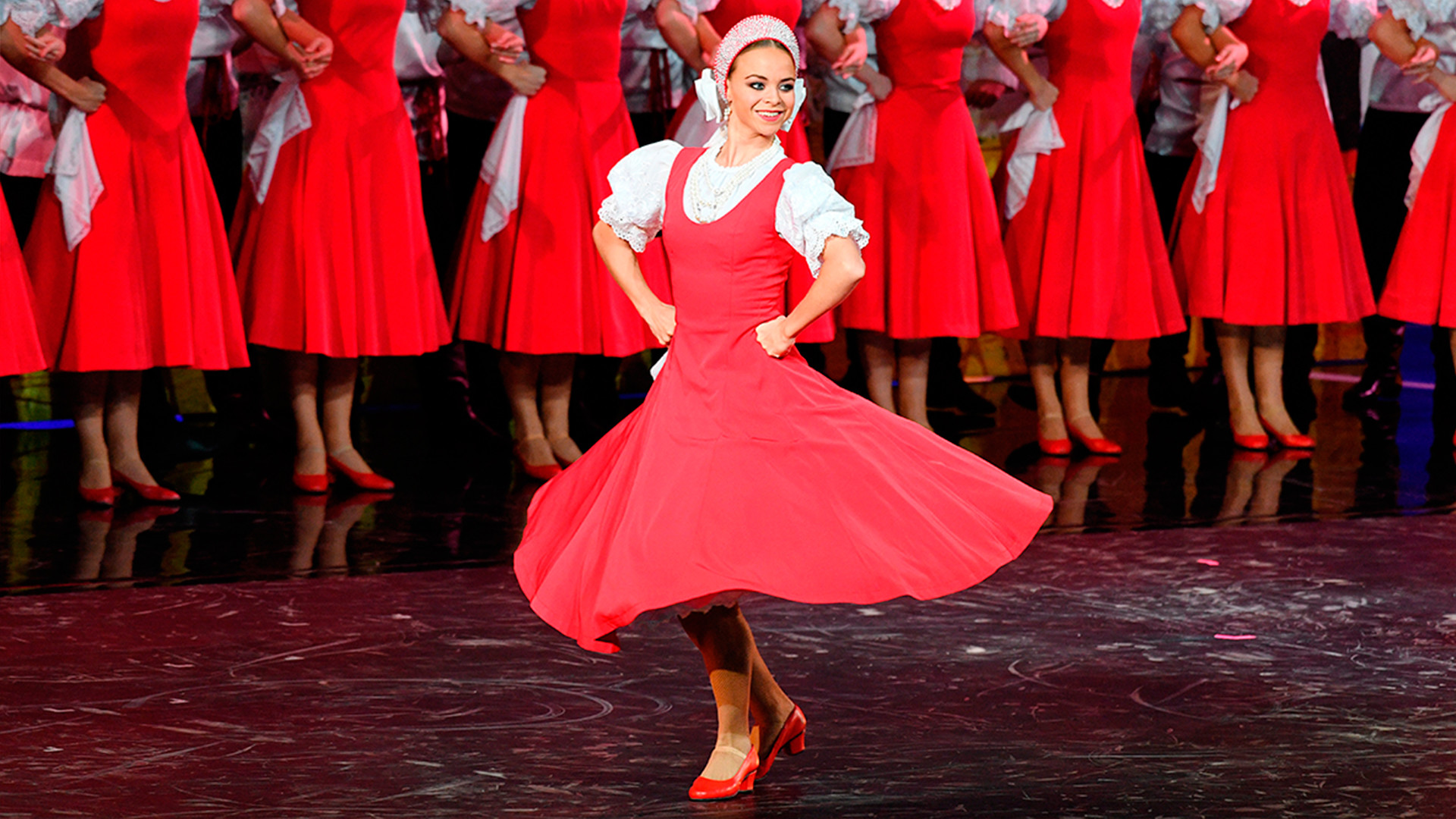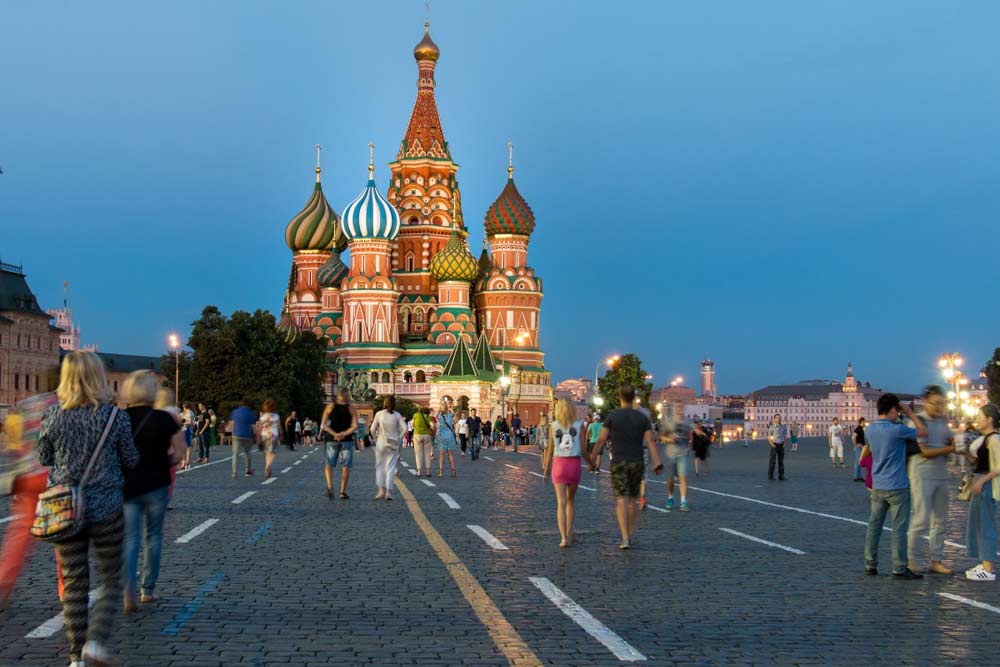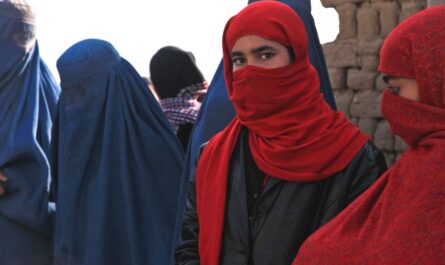What are some of the interesting facts about the Soviet Union? Despite its totalitarian regime, the Soviet Union played a pivotal role in World War II, contributing significantly to the defeat of Nazi Germany. The post-war period saw the emergence of the Cold War between the Soviet Union and the United States, characterized by ideological rivalry, military buildup, and proxy conflicts across the globe. However, internal economic stagnation, political repression, and ethnic tensions plagued the later years of the Soviet Union. Ultimately, the Soviet Union collapsed in 1991, marking the end of an era and the beginning of a new chapter in world history. In this article, I am going to talk about some interesting facts about the Soviet Union.
Historic Soviet Union, USSR Interesting, Fun, Cool Facts
The Soviet Union, officially known as the Union of Soviet Socialist Republics (USSR), stands as a monumental chapter in the annals of human history. Emerging from the ashes of the Russian Empire in the aftermath of the Russian Revolution of 1917, the USSR was a vast, formidable entity that dominated the global stage for much of the 20th century. Founded on the principles of Marxism-Leninism, it sought to establish a classless, stateless society where the means of production were owned and controlled by the working class. Under the leadership of figures like Vladimir Lenin and later Joseph Stalin, the Soviet Union underwent rapid industrialization and collectivization, transforming from an agrarian society into an industrial powerhouse. Here are some interesting facts about the Soviet Union:
1. Novosibirsk’s Time Dilemma
In the early 1920s, Novosibirsk, a city divided by the Ob River, faced an unusual time zone situation. With no road bridge connecting the two halves, the city naturally evolved into two distinct time zones. The Meridian Hour, held directly on the river, led to a time difference with Moscow of 3 hours on the left bank and 4 hours on the right. While this arrangement didn’t pose significant challenges for Novosibirsk’s inhabitants, as each half lived independently, it did create some inconvenience for the city’s people, particularly in coordinating activities and interactions between the two sides.
2. Soviet Intervention in Xinjiang
In 1931, the Turkic-Muslim people of Xinjiang rose in revolt, prompting the intervention of various factions, including white guardsmen from the Russian Civil War and refugees fleeing famine and collectivization in the USSR. The Governor-General of Shen Province eventually negotiated with the Soviet Union for assistance in quelling the insurrection. The OGPU’s 13th Alma-ATA regiment, dressed in a white guard uniform, was dispatched to China. Additionally, the USSR sponsored military groups composed of Russian immigrants, leading to a complex dynamic where both “red” and “white” forces participated in the conflict.
3. Classic Soviet Song Quirk
The classic song featured in the 1934 film “Youth of Maxim” contains the memorable lyric “spinning, Spinning blue ball, spinning, spinning over my head.” Despite its apparent illogic, as it’s improbable for a ball to spin above one’s head, the song’s origins shed light on its curious wording. Originally penned in the mid-19th century, the song’s original version didn’t include the words “ball” and “scarf.” However, due to difficulties in enunciating the letter “f” when sung rapidly, the lyrics were modified over time to improve vocal clarity, resulting in the quirky but enduring phraseology found in the song.
4. The Labor Army: Origins and Evolution
In the early Soviet state, the concept of the labor army emerged as a means to mobilize manpower for various construction and infrastructure projects. Military personnel who had committed crimes were often referred to as the “Prisoners Red Army,” with the term abbreviated as “z/K” in official documents. This abbreviation later evolved into “prisoner kanaloarmeets” during the construction of the White Sea Canal, stemming from the words “s/to” and “Zek.” The labor army concept played a crucial role in harnessing manpower for large-scale projects, albeit with controversial implications regarding the treatment and utilization of individuals within this system.
5. Post-Revolution Formation: Birth of the Soviet Union
Following the tumultuous events of the Russian Revolution, the establishment of the Soviet Union materialized approximately five years later. This watershed moment marked the consolidation of power by Bolshevik forces led by Vladimir Lenin and the emergence of a new political order characterized by socialist principles and aspirations toward building a classless society. The formation of the Soviet Union heralded a profound transformation in the political, social, and economic landscape of Russia and the broader global arena, setting the stage for decades of ideological conflict and geopolitical rivalry.
6. Housing Policy: Universal Access to Shelter
A distinctive feature of the Soviet Union’s social policies was the provision of free housing for all individuals in need or desiring accommodation. This egalitarian approach aimed to ensure that every citizen had access to adequate and comfortable living quarters, irrespective of their socio-economic status. The state undertook the responsibility of constructing residential buildings and allocating living spaces based on the principle of need, thereby striving to eradicate homelessness and provide a basic standard of living for all members of society.
7. Collective Dining: Culinary Culture in the Soviet Union
In the Soviet Union, the communal dining experience extended beyond residential spaces to encompass workplaces, organizations, and educational institutions. Every business, organization, or school maintained its eating area or restaurant, where employees and students alike enjoyed access to fresh, nutritious meals prepared by trained chefs. This collective dining arrangement not only ensured that individuals received sustenance during their daily activities but also fostered a sense of community and camaraderie among colleagues and peers. Moreover, it exemplified the Soviet Union’s emphasis on promoting social cohesion and providing essential services to support the well-being of its populace.
8. Mandatory Military Service in the Soviet Union
In the Soviet Union, all able-bodied males were obligated to serve in the military, with exemptions granted only to those who were physically handicapped. The length of compulsory service varied depending on the branch of the military. While both the Army and Air Force required a two-year commitment, service in the military navy extended to three years. Notably, the duration of military service was considered labor time and was factored into the calculation of individuals’ overall pension eligibility, highlighting the interconnectedness of military service and social welfare provisions in the Soviet Union.
9. Integration of Military Service and Social Benefits
The inclusion of military service as part of individuals’ labor time had broader implications for social welfare policies in the Soviet Union. By incorporating military service into the calculation of pension eligibility, the state recognized the contributions of servicemen to the nation’s labor force and sought to ensure their financial security in retirement. This integration underscored the interconnectedness of military service, labor participation, and social welfare provisions within the Soviet system, reflecting the state’s commitment to providing for its citizens’ well-being throughout their lives.
10. Freedom of Travel: Soviet Union’s Policy
In the Soviet Union, an unexpected aspect of life was the allowance of free travel journeys. Despite the centralized control over many aspects of citizens’ lives, individuals were permitted to undertake journeys without restrictions within the country’s borders. This surprising freedom of movement stood in contrast to other strict regulations imposed by the Soviet regime, providing a degree of autonomy for citizens to explore different regions and cultures within the vast expanse of the Soviet Union.
11. Duration and Ideological Significance
The Soviet Union held sway for a significant period, operating for a total of 69 years, spanning from its inception in 1922 until its dissolution in 1991. Throughout its existence, the Soviet Union held a paramount position as the first nation to proclaim itself socialist and endeavor to achieve communism. This prolonged period marked a tumultuous chapter in world history, characterized by ideological conflict, geopolitical tensions, and significant social and economic transformations.
12. Federal Structure: Formation of the Soviet Union
The Soviet Union was structured as a federation comprising 14 Soviet socialist republics and one Soviet federative socialist republic, which constituted the core territory of Russia. This diverse array of republics, each with its own distinct cultural, linguistic, and historical heritage, came together to form the cohesive entity known as the Soviet Union. Led by the dominant presence of Russia, the Soviet Union embraced a federative structure that aimed to balance centralized authority with regional autonomy, albeit under the overarching ideological framework of socialism and communism.
13. Leadership Opportunities: Meritocracy in the Soviet Union
In the Soviet Union, a distinctive aspect of its social structure was the opportunity for anyone to ascend to positions of leadership, irrespective of their affiliation with the Communist Party (CPSU). While membership in the CPSU was advantageous, it was not a prerequisite for attaining leadership roles. Individuals could rise through the ranks based on their merit, skills, and contributions to society. This ethos of meritocracy underscored the Soviet Union’s purported commitment to egalitarian principles and provided avenues for social mobility, enabling talented individuals from diverse backgrounds to assume positions of authority and responsibility within the state apparatus and other organizations.
14. Wage Equality: Valuing Contributions to the Common Good
A defining feature of the Soviet economic system was its emphasis on rewarding individuals based on their contributions to the common good rather than their hierarchical position within society. In stark contrast to capitalist economies, where income disparities often prevail, wages in the Soviet Union were determined by the value of one’s labor and the societal benefit derived from it. Consequently, a laborer engaged in physically demanding work might earn more than a director or manager, reflecting the intrinsic value placed on manual labor and the collective nature of Soviet economic principles.
15. Minimal Taxation: State Support for the Citizenry
In the Soviet Union, the government implemented policies aimed at minimizing the tax burden on its citizens. Unlike in many capitalist societies where taxation serves as a significant source of government revenue, Soviet citizens were subjected to relatively low levels of taxation. This approach reflected the state’s commitment to providing for the welfare and well-being of its populace through alternative means, such as state-sponsored social services, universal access to healthcare and education, and subsidized housing and utilities. By alleviating the financial burden on its citizens, the Soviet government sought to foster social cohesion and enhance the quality of life for all members of society.
16. Scientific and Space Exploration Triumphs
The Soviet Union stood at the forefront of scientific advancement and space exploration, boasting remarkable achievements that captured the world’s imagination. From launching the first artificial satellite, Sputnik, in 1957, to sending the first human, Yuri Gagarin, into space in 1961, the Soviet space program achieved numerous historic milestones. Additionally, the Soviet Union played a pivotal role in cosmic exploration by sending the first spacecraft to the Moon, Venus, and Mars. These groundbreaking achievements not only showcased the Soviet Union’s technological prowess but also underscored its commitment to pushing the boundaries of human knowledge and exploration beyond Earth’s confines.

17. Economic Self-Sufficiency and Dependability
One of the hallmarks of the Soviet Union’s economic system was its pursuit of self-sufficiency across various sectors. Unlike many nations reliant on imports for essential goods, the USSR prioritized domestic production to ensure its autonomy and resilience against external disruptions. Through centralized planning and state-controlled industries, the Soviet Union cultivated a robust industrial base capable of meeting the nation’s needs for food, energy, manufacturing, and defense. This self-sufficiency instilled a sense of dependability and stability within the Soviet economy, fostering confidence among its citizens and mitigating the vulnerabilities associated with global market fluctuations.
18. Interest-Free Banking: Financial Policy
In the Soviet Union, a unique financial policy allowed individuals to deposit money in banks for extended periods without incurring interest charges. Under this system, depositors could entrust their funds to banks for up to 20 years without facing any additional costs. Upon maturity, depositors were entitled to receive their original deposits without any accrued interest. This approach to banking reflected the Soviet government’s emphasis on providing financial services that prioritized the needs of its citizens over profit motives. By offering interest-free banking options, the Soviet Union sought to promote savings, financial stability, and equitable access to banking services among its populace, reinforcing its commitment to socialist principles of economic equality and social welfare.
19. State-Run Lottery System: Bond Purchases as Prizes
In the Soviet Union, the state-operated a unique lottery system wherein purchasing government bonds served as a ticket for potential prizes. Individuals who invested in government bonds effectively entered into a lottery, with the bond itself acting as the entry ticket. This innovative approach allowed citizens to participate in the lottery while simultaneously investing in government securities. Moreover, holders of these bonds had the flexibility to sell them at their convenience, providing liquidity and financial freedom to bondholders. This system not only incentivized savings and investment but also democratized access to potential rewards, aligning with the socialist principles of wealth distribution and collective prosperity.
20. Prohibition of Deception: Legal Safeguards
A fundamental tenet of Soviet society was the prohibition of any form of deception or fraud. Individuals were expected to adhere to strict ethical standards in their dealings, and deceptive practices were strictly forbidden. In the event of encountering fraud or deceit, citizens had the right to seek recourse through the legal system by filing a police report. This commitment to transparency and integrity fostered a sense of trust and accountability within Soviet society, promoting fairness and equity in interpersonal and business transactions.
21. Integrity and Rule Adherence: Cultural Norms
Corruption was virtually nonexistent in the Soviet Union, owing to a culture that prioritized integrity and adherence to societal norms. Youngsters were raised with a deep-seated respect for authority and a strong commitment to following the rules of their nation. This cultural upbringing instilled in them a sense of duty towards their fellow citizens and the collective well-being of society as a whole. As a result, individuals upheld the principles of honesty, loyalty, and patriotism, contributing to a society characterized by social cohesion and mutual trust. The absence of corruption underscored the effectiveness of Soviet educational and cultural initiatives in shaping citizens’ values and behaviors in alignment with socialist ideals.
22. Free Childcare Services: Support for Families
In the Soviet Union, childcare services were provided to families at no cost, alleviating the financial burden on parents and caregivers. Qualified and unpaid babysitters were available to supervise children, allowing parents to attend to their responsibilities or pursue employment without worrying about childcare expenses. This system of free childcare underscored the state’s commitment to supporting families and ensuring the well-being and development of children, reflecting socialist principles of social welfare and collective responsibility for nurturing the younger generation.
23. Democratic Electoral System: Inclusive Representation
Soviet electoral processes were characterized by inclusivity and democratic principles, wherein citizens had the freedom to choose whether or not to participate in voting. People’s councils and their deputies, responsible for governing various aspects of society, were democratically elected representatives chosen by the populace. Importantly, membership in the Communist Party of the Soviet Union (CPSU) was not a prerequisite for candidacy or participation in elections. Voters had the autonomy to select candidates based on their trustworthiness, competence, and dedication to serving the interests of the community, regardless of party affiliation. This electoral framework aimed to ensure diverse representation and empower ordinary citizens in the decision-making process. How AI, ChatGPT maximizes earnings of many people in minutes
24. Free Utilities: Essential Services Accessible to All
In the Soviet Union, essential utilities such as water and gas were provided to citizens without charge, ensuring universal access to these vital resources. Individuals were not burdened with utility bills for basic amenities like running water or heating gas, allowing them to utilize these services as needed without financial constraints. This policy exemplified the state’s commitment to guaranteeing the basic needs and comforts of its citizens, fostering a sense of security and well-being within Soviet households. By eliminating fees for water and gas, the Soviet government promoted equality and social cohesion, reinforcing the notion of shared resources and collective welfare in society.
25. Affordable Electricity: Accessible Energy for All
In the Soviet Union, electricity was provided to households at a remarkably affordable rate, ensuring that energy expenses remained manageable for families. The electricity bill was notably low, with the cost of electricity, along with other housing and utilities, typically amounting to around a dollar. This affordability facilitated widespread access to electricity, enabling households to meet their energy needs without straining their finances. By ensuring that electricity remained affordable for all citizens, the Soviet government prioritized the provision of essential services while promoting economic stability and social welfare. Motivation – Mind – Success – Thinking – Productivity – Happiness
26. Support for Single-Parent Families: Social Welfare Initiatives
Single-parent families, particularly those with children, received comprehensive support from social programs and subsidies in the Soviet Union. These families were eligible for various forms of assistance aimed at alleviating financial burdens and ensuring the well-being of both parents and children. Children from single-parent households were provided with free school uniforms and meals, enabling them to participate fully in their education without facing financial obstacles. Through these initiatives, the Soviet state demonstrated its commitment to safeguarding the interests of vulnerable families and promoting equality of opportunity for all children, regardless of their family structure.
27. Trade Union Advocacy: Advocating for Workers’ Rights
Trade unions played a vital role in advocating for workers’ rights and addressing family-related issues in the Soviet Union. These organizations served as intermediaries between employees and employers, representing workers’ interests and negotiating for improved working conditions, wages, and benefits. Additionally, trade unions provided support and assistance to workers facing family-related challenges, offering guidance and resources to navigate various social and economic issues. By empowering workers and safeguarding their rights, trade unions contributed to the overall well-being and stability of families, reinforcing the collective spirit of solidarity and cooperation within Soviet society. Fitness – Meditation – Diet – Weight Loss – Healthy Living – Yoga
28. Ensured Nutritional Security: Comprehensive Food Provision
In the Soviet Union, nutritional security was a fundamental priority, with measures in place to ensure that all citizens had access to an adequate and balanced diet. Various initiatives, including state-run agricultural programs and distribution systems, were implemented to guarantee food availability and affordability for the population. Through centralized planning and management, the Soviet government addressed agricultural production, food processing, and distribution channels to meet the nutritional needs of individuals and families. As a result, nutritional security was effectively maintained, with citizens enjoying access to a diverse range of food products that fulfilled dietary requirements and promoted health and well-being.
29. Access to Free Land: Opportunities for Rural Settlement
Individuals in the Soviet Union were provided with the opportunity to acquire free land to build country homes and establish agricultural enterprises. Through government initiatives, prospective settlers were offered parcels of land at no cost, enabling them to realize their aspirations of rural living and self-sufficiency. This policy encouraged the development of rural communities and facilitated the expansion of agricultural activities across the country. By granting access to free land, the Soviet government sought to promote individual ownership and entrepreneurship while supporting the growth of rural economies and infrastructure. RPM 3.0 – 60% CONVERSION & Money for Affiliate Marketing
30. The Concept of Eurasia: Sovereign Republics in Unity
Before 1922, several sovereign republics in the Soviet Union were physically interconnected but maintained independent governance structures. Collectively referred to as ‘Eurasia,’ these regions shared geographical proximity and historical ties while retaining distinct identities and administrative autonomy. The concept of Eurasia represented the diversity and unity inherent within the Soviet Union, embodying the interconnectedness of its constituent republics and their shared commitment to socialist principles and collective progress. This geopolitical arrangement underscored the complex dynamics of governance and cooperation within the Soviet Federation, reflecting the nation’s multifaceted identity and historical evolution.
We hope you have enjoyed these soviet union facts!
More Interesting Articles
- 25 California Drought Facts – Causes | Effects | Solution
- 38 Interesting Facts About Australian Flag
- 25 Interesting Facts About The Roman Empire
- 100 Fun Facts About France One Should Know
- 15 Facts About Letchworth State Park, NY
- 40 Amazing Walt Disney World Facts
- 25 Interesting Facts About Glastonbury Festival
- 10 Interesting Facts About Antalya Turkey
- 70 Interesting Facts about the Eiffel Tower
- 26 Facts About Tokyo Meiji Jingu Temple
- 20 Fun Facts about Yosemite National Park, California
- 30 Interesting Facts About Dublin, Ireland
- 57 Must-do Things in Budapest for Travelers
- 13 Interesting Beijing Facts Everyone Must Know
- 16 Facts – Harbin International Ice and Snow Sculpture Festival
- 20 Surprising Facts About The German Flag
- 25 Surprising Facts About Florida Flag
- 17 Interesting Netherlands Facts to Surprise All
- 100 Tallest Completed Buildings in the World
- 15 Interesting Louvre Museum Facts to Know



